Ancient Nepal
By 55,000 years ago, the first modern humans had arrived on the Indian subcontinent from Africa, where they had earlier evolved.[31][32][33] The earliest known modern human remains in South Asia date to about 30,000 years ago.[34] The oldest discovered archaeological evidence of human settlements in Nepal dates to around the same time.[35]
After 6500 BCE, evidence for domestication of food crops and animals, construction of permanent structures, and storage of agricultural surplus appeared in Mehrgarh and other sites in what is now Balochistan.[36] These gradually developed into the Indus Valley Civilization,[37][36] the first urban culture in South Asia.[38] Prehistoric sites of palaeolithic, mesolithic and neolithic origins have been discovered in the Siwalik hills of Dang district.[39] The earliest inhabitants of modern Nepal and adjoining areas are believed to be people from the Indus Valley Civilization. It is possible that the Dravidian people whose history predates the onset of the Bronze Age in the Indian subcontinent (around 6300 BCE) inhabited the area before the arrival of other ethnic groups like the Tibeto-Burmans and Indo-Aryans from across the border.[40] By 4000 BCE, the Tibeto-Burmese people had reached Nepal either directly across the Himalayas from Tibet or via Myanmar and north-east India or both.[41] Another possibility for the first people to have inhabited Nepal are the Kusunda people. According to Hogdson (1847), the earliest inhabitants of Nepal were perhaps the Kusunda people, probably of proto-Australoid origin.[42] Stella Kramrisch (1964) mentions a substratum of a race of pre-Dravidians and Dravidians, who were in Nepal even before the Newars, who formed the majority of the ancient inhabitants of the valley of Kathmandu.[43]
By the late Vedic period, Nepal was being mentioned in various Hindu texts, such as the late Vedic Atharvaveda Pariśiṣṭa and in the post-Vedic Atharvashirsha Upanishad.[44] The Gopal Bansa was the oldest dynasty to be mentioned in various texts as the earliest rulers of the central Himalayan kingdom known by the name 'Nepal'.[45] The Gopalas were followed by Kiratas who ruled for over 16 centuries by some accounts.[46] According to the Mahabharata, the then Kirata king went to take part in the Battle of Kurukshetra. In the south-eastern region, Janakpurdham was the capital of the prosperous kingdom of Videha or Mithila, that extended down to the Ganges, and home to King Janaka and his daughter, Sita.
Around 600 BCE, small kingdoms and confederations of clans arose in the southern regions of Nepal. From one of these, the Shakya polity, arose a prince who later renounced his status to lead an ascetic life, founded Buddhism, and came to be known as Gautama Buddha (traditionally dated 563–483 BCE).[47] Nepal came to be established as a land of spirituality and refuge in the intervening centuries, played an important role in transmitting Buddhism to East Asia via Tibet,[48] and helped preserve Hindu and Buddhist manuscripts.
By 250 BCE, the southern regions had come under the influence of the Maurya Empire. Emperor Ashoka made a pilgrimage to Lumbini and erected a pillar at Buddha's birthplace, the inscriptions on which mark the starting point for properly recorded history of Nepal.[49] Ashoka also visited the Kathmandu valley and built monuments commemorating Gautam Buddha's visit there. By the 4th century CE, much of Nepal was under the influence of the Gupta Empire.[d][50]
In the Kathmandu valley, the Kiratas were pushed eastward by the Lichchhavis, and the Lichchhavi dynasty came into power c. 400 CE. The Lichchhavis built monuments and left a series of inscriptions; Nepal's history of the period is pieced together almost entirely from them.[51][48]
In 641, Songtsen Gampo of the Tibetan Empire sends Narendradeva back to Licchavi with an army and subjugates Nepal. Parts of Nepal and Licchavi was later under the direct influences of the Tibetan empire.[52]
The Licchavi dynasty went into decline in the late 8th century, and was followed by a Thakuri rule. Thakuri kings ruled over the country up to the middle of the 11th century CE; not much is known of this period that is often called the dark period.[53]
Medieval Nepal
In the 11th century, a powerful empire of Khas people emerged in western Nepal whose territory at its highest peak included much of western Nepal as well as parts of western Tibet and Uttarakhand of India. By the 14th century, the empire had splintered into loosely associated Baise rajyas, literally 22 states as they were counted. The rich culture and language of the Khas people spread throughout Nepal and as far as Indo-China in the intervening centuries; their language, later renamed Nepali language, became the lingua franca of Nepal as well as much of North-east India.[48]
In south-eastern Nepal, Simraungarh annexed Mithila around 1100 CE, and the unified Tirhut stood as a powerful kingdom for more than 200 years,[54] even ruling over Kathmandu for a time.[55] After another 300 years of Muslim rule, Tirhut came under the control of the Sens of Makawanpur.[54] In the eastern hills, a confederation of Kirat principalities ruled the area between Kathmandu and Bengal.
In the Kathmandu valley, the Mallas, who make several appearances in Nepalese history since ancient times, had established themselves in Kathmandu and Patan by middle of the 14th century. The Mallas ruled the valley first under the suzerainty of Tirhut, but established independent reign by late 14th century as Tirhut went into decline. In the late 14th century, Jayasthiti Malla introduced widespread socio-economic reforms, principal of which was the caste system. By dividing the indigenous non-Aryan Buddhist population into castes modelled after the four Varna system of Hinduism, he provided an influential model for the Sanskritization and Hinduization of the indigenous non-Hindu tribal populations in all principalities throughout Nepal. By the middle of the 15th century, Kathmandu had become a powerful empire which, according to Kirkpatrick, extended from Digarchi or Sigatse in Tibet to Tirhut and Gaya in India.[56] In the late 15th century, Malla princes divided their kingdom in four — Kathmandu, Patan and Bhaktapur in the valley and Banepa to the east. The competition for prestige among these brotherly kingdoms saw the flourishing of art and architecture in central Nepal, and the building of famous Kathmandu, Patan and Bhaktapur Durbar Squares; their division and mistrust led to their fall in the late 18th century, and ultimately, unification of Nepal into a modern state.[48][57]
Apart from one destructive sacking of Kathmandu in the early 13th century, Nepal remain largely untouched by the Muslim invasion of India that began in the 11th century. However, the Mughal period saw an influx of high-caste Hindus from India into Nepal. They soon intermingled with the Khas people and by the 16th century, there were about 50 Rajput-ruled principalities in Nepal, including the 22 baisi states and, to their east in west-central Nepal, 24 Chaubisi states. There emerged a view that Nepal remained the true bastion of unadulterated Hinduism at a time when Indian culture had been influenced by centuries of Mughal, followed by British rule. Gorkha, one of the Baisi states, emerged as an influential and ambitious kingdom with a reputation for justice, after it codified the first Hinduism-based laws in the Nepalese hills.[48]
Unification, expansion and consolidation
In the mid-18th century, Prithvi Narayan Shah, a Gorkha king, set out to put together what would become present-day Nepal. He embarked on his mission by securing the neutrality of the bordering mountain kingdoms. After several bloody battles and sieges, notably the Battle of Kirtipur, he managed to conquer the Kathmandu Valley in 1769.[58]
The Gorkha control reached its height when the North Indian territories of the Kumaon and Garhwal Kingdoms in the west to Sikkim in the east came under Nepalese control. A dispute with Tibet over the control of mountain passes and inner Tingri valleys of Tibet forced the Qing Emperor of China to start the Sino-Nepali War compelling the Nepali to retreat to their own borders in the north.[59] Rivalry between the Kingdom of Nepal and the East India Company over the control of states bordering Nepal eventually led to the Anglo-Nepali War (1815–16). At first, the British underestimated the Nepali and were soundly defeated until committing more military resources than they had anticipated needing. Thus began the reputation of Gurkhas as fierce and ruthless soldiers. The war ended in the Sugauli Treaty, under which Nepal ceded recently captured lands.[60][48]
Factionalism inside the royal family led to a period of instability. In 1846, a plot was discovered revealing that the reigning queen had planned to overthrow Jung Bahadur Kunwar, a fast-rising military leader. This led to the Kot massacre; armed clashes between military personnel and administrators loyal to the queen led to the execution of several hundred princes and chieftains around the country. Bir Narsingh Kunwar emerged victorious and founded the Rana dynasty, and came to be known as Jung Bahadur Rana. The king was made a titular figure, and the post of Prime Minister was made powerful and hereditary. The Ranas were staunchly pro-British and assisted them during the Indian Rebellion of 1857 (and later in both World Wars). In 1860 some parts of the western Terai region were gifted to Nepal by the British as a friendly gesture because of her military help to sustain British control in India during the rebellion (known as Naya Muluk, new country). In 1923, the United Kingdom and Nepal formally signed an agreement of friendship that superseded the Sugauli Treaty of 1816.[61]
The Hindu practice of Sati, in which a widow sacrificed herself in the funeral pyre of her husband, was banned in 1919, and slavery was officially abolished in 1924.[62] Rana rule was marked by tyranny, debauchery, economic exploitation and religious persecution.[63][64]
Nepal after 1950
In the late 1940s, newly emerging pro-democracy movements and political parties in Nepal were critical of the Rana autocracy. Following the success of Indian Independence Movement which Nepalese activists had taken part in, with India's support and cooperation of King Tribhuvan, Nepali Congress was successful in toppling the Rana regime, establishing a parliamentary democracy. After a decade of power wrangling between the king and the government, King Mahendra (ruled 1955–1972) scrapped the democratic experiment in 1960, and a "partyless" Panchayat system was created to govern Nepal. The political parties were banned and politicians imprisoned or exiled.[65]
The Panchayat rule modernised the country, introducing reforms and developing infrastructure, but curtailed liberties and imposed heavy censorship. In 1990, the People's Movement forced King Birendra (ruled 1972–2001) to accept constitutional reforms and to establish a multiparty democracy.[65][66]
In 1996, the Maoist Party started a violent bid to replace the royal parliamentary system with a people's republic.[65] This led to the long Nepali Civil War and more than 16,000 deaths.[67] With the death of both the King and the Crown Prince in a massacre in the royal palace, King Birendra's brother Gyanendra inherited the throne in 2001[65] and subsequently assumed full executive powers aiming to quash the Maoist insurgency himself.[68]
The Maoist Party joined mainstream politics following the success of the peaceful democratic revolution of 2006;[69] Nepal became a secular state,[70] and on 28 May 2008, it was declared a republic,[69] ending its time-honoured status as the world's only Hindu Kingdom.[71] The country's new designation as the Federal Democratic Republic of Nepal was submitted to the United Nations on 4 August 2008,[72] and later confirmed by the constitution. After a decade of instability and internal strife which saw two constituent assembly elections, the new constitution was promulgated on 20 September 2015, making Nepal a federal democratic republic divided into seven provinces.[73][74]
Geography
Nepal is of roughly trapezoidal shape, about 800 kilometres (500 mi) long and 200 kilometres (120 mi) wide, with an area of 147,516 km2 (56,956 sq mi). It lies between latitudes 26° and 31°N, and longitudes 80° and 89°E. Nepal's defining geological processes began 75 million years ago when the Indian plate, then part of the southern supercontinent Gondwana, began a north-eastward drift caused by seafloor spreading to its south-west, and later, south and south-east.[75] Simultaneously, the vast Tethyn oceanic crust, to its northeast, began to subduct under the Eurasian plate.[75] These dual processes, driven by convection in the Earth's mantle, both created the Indian Ocean and caused the Indian continental crust eventually to under-thrust Eurasia and to uplift the Himalayas.[75] The rising barriers blocked the paths of rivers creating large lakes, which only broke through as late as 100,000 years ago, creating fertile valleys in the middle hills like the Kathmandu Valley. In the western region, rivers which were too strong to be hampered, cut some of the world's deepest gorges.[76] Immediately south of the emerging Himalayas, plate movement created a vast trough that rapidly filled with river-borne sediment[77] and now constitutes the Indo-Gangetic Plain.[78] Nepal lies almost completely within this collision zone, occupying the central sector of the Himalayan arc, nearly one third of the 2,400 km (1,500 mi)-long Himalayas,[79][80][81][82][83][84] with a small strip of southernmost Nepal stretching into the Indo-Gangetic plain and two districts in the northwest stretching up to the Tibetan plateau.[76]
Nepal is divided into three principal physiographic belts known as Himal-Pahad-Terai.[e] Himal is the mountain region containing snow and situated in the Great Himalayan Range; it makes up the northern part of Nepal. It contains the highest elevations in the world including 8,848 metres (29,029 ft) height Mount Everest (Sagarmāthā in Nepali) on the border with China. Seven other of the world's "eight-thousanders" are in Nepal or on its border with China: Lhotse, Makalu, Cho Oyu, Kangchenjunga, Dhaulagiri, Annapurna and Manaslu. Pahad is the mountain region that does not generally contain snow. The mountains vary from 800 to 4,000 metres (2,600 to 13,100 ft) in altitude, with progression from subtropical climates below 1,200 metres (3,900 ft) to alpine climates above 3,600 metres (11,800 ft). The Lower Himalayan Range, reaching 1,500 to 3,000 metres (4,900 to 9,800 ft), is the southern limit of this region, with subtropical river valleys and "hills" alternating to the north of this range. Population density is high in valleys but notably less above 2,000 metres (6,600 ft) and very low above 2,500 metres (8,200 ft), where snow occasionally falls in winter. The southern lowland plains or Terai bordering India are part of the northern rim of the Indo-Gangetic Plain. Terai is the lowland region containing some hill ranges. The plains were formed and are fed by three major Himalayan rivers: the Koshi, the Narayani, and the Karnali as well as smaller rivers rising below the permanent snowline. This region has subtropical to tropical climate. The outermost range of the foothills called Sivalik Hills or Churia Range, cresting at 700 to 1,000 metres (2,300 to 3,280 ft), marks the limits of the Gangetic Plain; however broad, low valleys called Inner Terai Valleys (Bhitri Tarai Upatyaka) lie north of these foothills in several places.
The Indian plate continues to move north relative to Asia at about 50 mm (2.0 in) per year.[85] This makes Nepal an earthquake prone zone, and periodic earthquakes that have devastating consequences present a significant hurdle to development. Erosion of the Himalayas is a very important source of sediment, which flows to the Indian Ocean.[86] Saptakoshi, in particular, carries huge amount of silt out of Nepal but sees extreme drop in Gradient in Bihar, causing severe floods and course changes, and is therefore, known as the sorrow of Bihar. Severe flooding and landslides cause deaths and disease, destroy farmlands and cripple the transport infrastructure of the country, during the monsoon season each year.
Nepal has five climatic zones, broadly corresponding to the altitudes. The tropical and subtropical zones lie below 1,200 metres (3,900 ft), the temperate zone 1,200 to 2,400 metres (3,900 to 7,900 ft), the cold zone 2,400 to 3,600 metres (7,900 to 11,800 ft), the subarctic zone 3,600 to 4,400 metres (11,800 to 14,400 ft), and the Arctic zone above 4,400 metres (14,400 ft). Nepal experiences five seasons: summer, monsoon, autumn, winter and spring. The Himalayas block cold winds from Central Asia in the winter and form the northern limits of the monsoon wind patterns.
Biodiversity
Nepal contains a disproportionately large diversity of plants and animals, relative to its size.[88][89] Nepal, in its entirety, forms the western portion of the eastern Himalayan biodiversity hotspot, with notable biocultural diversity.[90] The dramatic differences in elevation found in Nepal (60 m from sea level in the Terai plains, to 8,848 m Mount Everest)[91] result in a variety of biomes.[88] Eastern half of Nepal is richer in biodiversity as it receives more rain, compared to western parts, where arctic desert-type conditions are more common at higher elevations.[89] Nepal is a habitat for 4.0% of all mammal species, 8.9% of bird species, 1.0% of reptile species, 2.5% of amphibian species, 1.9% of fish species, 3.7% of butterfly species, 0.5% of moth species and 0.4% of spider species.[89] In its 35 forest-types and 118 ecosystems,[88][f] Nepal harbours 2% of the flowering plant species, 3% of pteridophytes and 6% of bryophytes.[89]
Nepal's forest cover is 59,624 km2 (23,021 sq mi), 40.36% of the country's total land area, with an additional 4.38% of scrubland, for a total forested area of 44.74%, an increase of 5% since the turn of the millennium.[92] The country had a 2019 Forest Landscape Integrity Index mean score of 7.23/10, ranking it 45th globally out of 172 countries.[93] In the southern plains, Terai-Duar savanna and grasslands ecoregion contains some of the world's tallest grasses as well as Sal forests, tropical evergreen forests and tropical riverine deciduous forests.[94] In the lower hills (700 m – 2,000 m), subtropical and temperate deciduous mixed forests containing mostly Sal (in the lower altitudes), Chilaune and Katus, as well as subtropical pine forest dominated by Chir pine are common. The middle hills (2,000 m – 3,000 m) are dominated by Oak and Rhododendron. Subalpine coniferous forests cover the 3,000 m to 3,500 m range, dominated by Oak (particularly in the west), Eastern Himalayan fir, Himalayan pine and Himalayan hemlock; Rhododendron is common as well. Above 3,500 m in the west and 4,000 m in the east, coniferous trees give way to Rhododendron-dominated alpine shrubs and meadows.[89]
Among the notable trees, are the astringent Azadirachta indica, or neem, which is widely used in traditional herbal medicine,[95] and the luxuriant Ficus religiosa, or peepal,[96] which is displayed on the ancient seals of Mohenjo-daro,[97] and under which Gautam Buddha is recorded in the Pali canon to have sought enlightenment.[98]
Most of the subtropical evergreen broad-leaved forest of the lower himalayan region is descended from the tethyan tertiary flora.[99] As the Indian plate collided with Eurasia forming and raising the Himalayas, the arid and semi-arid mediterranean flora was pushed up and adapted to the more alpine climate over the next 40–50 million years.[99][100] The Himalayan biodiversity hotspot was the site of mass exchange and intermingling of the Indian and Eurasian species in the neogene.[101] One mammal species (Himalayan field mouse), two each of bird and reptile species, nine amphibian, eight fish and 29 butterfly species are endemic to Nepal.[89][g]
Nepal contains 107 IUCN-designated threatened species, 88 of them animal species, 18 plant species and one species of "fungi or protist" group.[104] These include the endangered Bengal tiger, the Red panda, the Asiatic elephant, the Himalayan musk deer, the Wild water buffalo and the South Asian river dolphin,[105] as well as the critically endangered Gharial, the Bengal florican,[88][106] and the White-rumped Vulture, which has become nearly extinct by having ingested the carrion of diclofenac-treated cattle.[107] The pervasive and ecologically devastating human encroachment of recent decades has critically endangered Nepali wildlife. In response, the system of national parks and protected areas, first established in 1973 with the enactment of National Parks and Wildlife Conservation Act 1973,[108] was substantially expanded. Vulture restaurants[89] coupled with a ban on veterinary usage of diclofenac has seen a rise in the number of white-rumped vultures.[109][107] The community forestry program which has seen a third of the country's population directly participate in managing a quarter of the total forested area, has helped the local economies while reducing human-wildlife conflict.[110][111] The breeding programmes[112] coupled with community-assisted military patrols,[113] and a crackdown on poaching and smuggling, has seen poaching of critically endangered tigers and elephants as well as vulnerable rhinos, among others, go down to effectively zero, and their numbers have steadily increased.[114] Nepal has ten national parks, three wildlife reserves, one hunting reserve, three conservation areas and eleven buffer zones, covering a total area of 28,959.67 km2 (11,181.39 sq mi), or 19.67% of the total land area,[115] while ten wetlands are registered under the Ramsar Convention.[116]





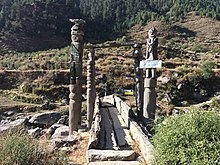

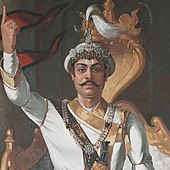




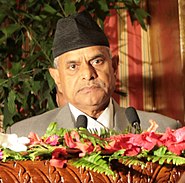
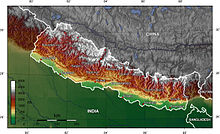
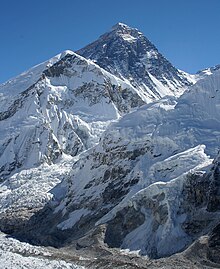



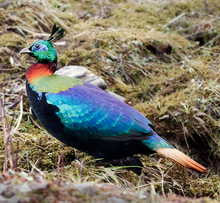


No comments: